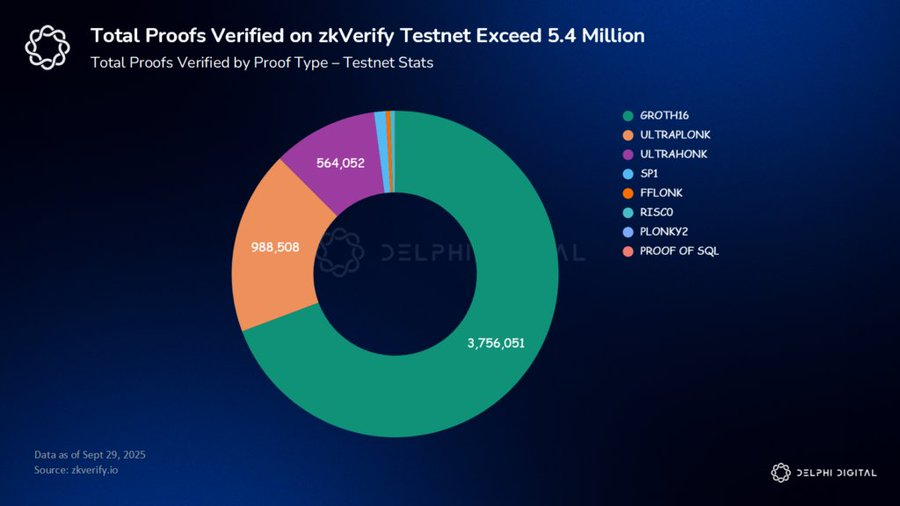Tonight, @ZKVProtocol's mainnet goes live + TGE, with major exchanges like Binance (alpha), KuCoin, and Gate starting trading simultaneously.
I spent a considerable amount of time researching this project and would like to share some observations.
1/ Is the emergence of zkVerify a historical inevitability?
The cost issue of ZK proof verification has become a fatal bottleneck for the entire industry. The cost of verifying a ZK proof on Ethereum can reach dozens of dollars, which hides a structural problem behind this high cost—general-purpose blockchains are not designed for ZK verification.
zkVerify's solution is a fundamental redesign: a dedicated verification chain + Rust native verifier. Through specialized design, verification costs are reduced by over 90%, and verification speed reaches the millisecond level.
More importantly, there is technical neutrality. zkVerify supports the entire ZK technology stack: STARKs, Plonky2, RiscZero, SP1, UltraHonk, Groth16, Fflonk. This full-stack compatibility is extremely important in the rapidly evolving ZK field—you do not need to bet on a specific technology route; all mainstream ZK solutions can be seamlessly integrated.
2/ Design of token economics
The supply structure of $VFY reflects the long-term thinking of the project team: a total supply of 1 billion, with an initial circulation of 307 million (30.66%), and an annual inflation rate of only 2.5%.
Release mechanism:
Team and investor TGE unlock 0%, locked for 12 months.
The community receives a 37.31% allocation, with 29% released at TGE.
The foundation holds 33.06%, with 60% released at TGE for ecological development.
This design almost eliminates the risk of early selling pressure while ensuring sufficient funds to promote ecological development. Given the $11 million financing background from Horizen Labs, the project has ample development resources.
3/ Competitive landscape analysis
zkVerify is not facing traditional competition but is pioneering a new track. Although there are other ZK infrastructure projects in the market, most focus on specific segments—either generating proofs or performing specific types of verification.
zkVerify's differentiation lies in its positioning as a "universal verification layer." It addresses a neglected but increasingly serious pain point: ZK technology has matured, but verification infrastructure remains primitive. It's akin to the early internet having the TCP/IP protocol but lacking a CDN.
From a timing perspective, this positioning is very accurate. ZK Rollups are experiencing explosive growth, zkApps are starting to land, and applications like ZK identity and ZK voting are continuously emerging. All of these require efficient, low-cost verification infrastructure.
At the same time, risks and opportunities coexist.
The biggest risk comes from the uncertainty of the technological route. If there are significant changes in the direction of ZK technology development, the value of a dedicated verification chain may be impacted.
Another challenge is ecological construction. No matter how good the technology is, it is difficult to realize value without applications using it. zkVerify needs to continuously invest resources to attract developers and project teams, which is a long-term process.
From an investment perspective, zkVerify's value logic is very clear: reduce ZK verification costs → release ZK application demand → increase network usage → drive $VFY value growth.

免责声明:本文章仅代表作者个人观点,不代表本平台的立场和观点。本文章仅供信息分享,不构成对任何人的任何投资建议。用户与作者之间的任何争议,与本平台无关。如网页中刊载的文章或图片涉及侵权,请提供相关的权利证明和身份证明发送邮件到support@aicoin.com,本平台相关工作人员将会进行核查。




